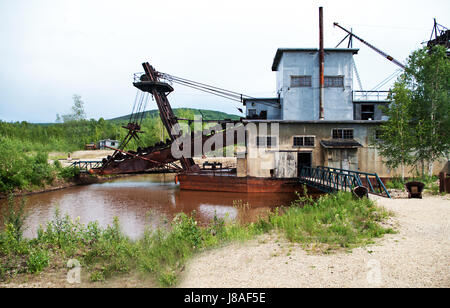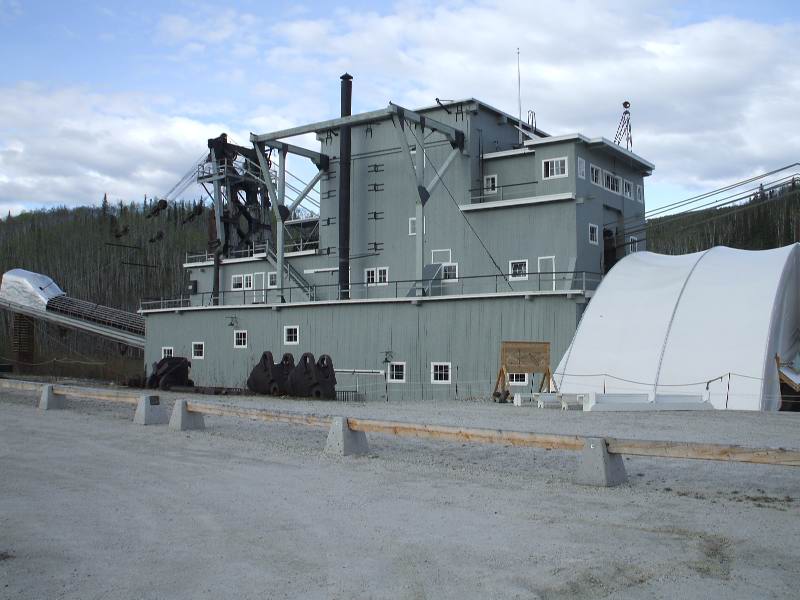



This was Yukon Exploration's last year of operations, however, as they declared bankruptcy that winter. Ingenuity is an important trait for mine managers to possess - in 1948, when a shortage of bulldozer parts caused a delay in stripping the overburden from the gold-bearing gravel, the creek was dammed to divert the flow of water and wash away the muck. During the 2 days I spent at the dredge camp last week, I had the pleasure of spending an evening with Jimmy, talking about his life mining on Glacier and Big Gold, starting in 1937. Among them was Jimmy Lynch, who now, 52 years later, still lives on the property (which he now owns) beside the dredge. Yukon Explorations held a total of 133 placer claims, and 62 miles of prospecting leases in the district, and on August 31, 1947, the dredge starting working ground that had been thawed by a crew of about 30 men. The dredge, built by Washington Iron Works, has 70 buckets, each 3½ cubic feet, on an endless chain. The following year, they rebuilt it near the confluence of Glacier and Big Gold Creeks, in the Sixtymile district about 50 miles west of Dawson. brought this diesel-powered bucket-line dredge to the Yukon from Oregon, where it had apparently been working. For one gold dredge on Big Gold Creek, though, 1999 marks not the end, but a new beginning. Slowly but surely, the pans, shovels, cabins and even huge pieces of mechanized equipment are disappearing, either into the hands of private collectors, or succumbing to old age. Scattered through the gold fields of the North are an astounding number of artifacts that could help tell of both the hardships and the pleasures of mining for gold in the wilderness. The Sixtymile Gold Dredge, Yukon & Alaska


 0 kommentar(er)
0 kommentar(er)
